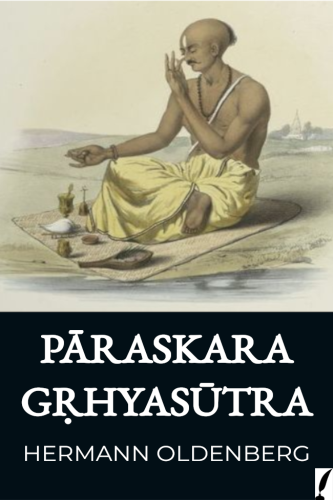Categories
- Antiques & Collectibles 13
- Architecture 36
- Art 48
- Bibles 22
- Biography & Autobiography 813
- Body, Mind & Spirit 142
- Business & Economics 28
- Children's Books 17
- Children's Fiction 14
- Computers 4
- Cooking 94
- Crafts & Hobbies 4
- Drama 346
- Education 46
- Family & Relationships 57
- Fiction 11829
- Games 19
- Gardening 17
- Health & Fitness 34
- History 1377
- House & Home 1
- Humor 147
- Juvenile Fiction 1873
- Juvenile Nonfiction 202
- Language Arts & Disciplines 88
- Law 16
- Literary Collections 686
- Literary Criticism 179
- Mathematics 13
- Medical 41
- Music 40
- Nature 179
- Non-Classifiable 1768
- Performing Arts 7
- Periodicals 1453
- Philosophy 64
- Photography 2
- Poetry 896
- Political Science 203
- Psychology 42
- Reference 154
- Religion 513
- Science 126
- Self-Help 84
- Social Science 81
- Sports & Recreation 34
- Study Aids 3
- Technology & Engineering 59
- Transportation 23
- Travel 463
- True Crime 29
Paraskara Grihyasutra
Description:
Grihyasutras belong to the Vedangas, comprising six divisions—Shiksha, Chandas, Vyakarana, Nirukta, Kalpa, and Jyotisha. Among these, Kalpa or Kalpasutras are delineated into four subdivisions: Srautasutra, Sulbasutra, Dharmasutra (also known as Dharmasastra), and Grihyasutra.
The first two divisions, Srautasutra and Sulbasutra, delve into the intricacies of Srauta yajna—fire sacrifices outlined in the Veda Samhitas, such as the Vajpeya yajna or Ashwamedha yajna. These texts expound on the ritual procedures of these yajnas, while Sulbasutra focuses on the mathematical formulations for constructing the sacrificial altar to precise dimensions.
In contrast, the Dharmasutras, classified as smriti, encapsulate societal codes, while Grihyasutras provide guidance for performing Smarta yajnas—Vedic domestic rituals. Smarta Yajna encompasses numerous Samskaras, as detailed in the Gautama Dharmasutra (8.14-21), spanning from birth to death, including Annaprashan, Upanayan, Marriage, and Shraddha or final rites. These rituals, traditionally conducted by householders, find detailed instructions in the Grihyasutras, serving as the cornerstone for marriages and other ceremonies.
Each Veda is associated with its Grihyasutras, exemplified by the Grihyasutra of the Shukla Yajurveda attributed to Paraskara. Accompanying each Grihyasutra are commentaries known as Paddhatis, offering further insight into ritual procedures.
In Bengal, Pashupati, the royal priest of the last sovereign Hindu king of Bengal, Lakshmana Sena, authored a Paddhati on Paraskara's Grihyasutra. Presently, marriages in Bengal, following the Yajurvedic tradition, adhere to this text. Other scholars such as Harihara, Gadadhara, Karka Upadhyaya, Jayarama, and Visvanatha have contributed commentaries on Paraskara's texts.
Grihyasutras were first translated into English by Hermann Oldenberg and published as "The Grihya-Sutras: Rules of Vedic Domestic Ceremonies" in two parts in 1886. This was part of the series known as "The Sacred Books of the East" (Vol. XXIX & XXX). These books are now in the public domain. We have sourced the text of Paraskara Grihyasutra from Part I of the above-mentioned book.
We have excluded the footnotes to enhance readability and make the text more accessible to common readers. Also, we have added subheadings, which are not part of the original edition, to each subsection based on the specific ceremony described in that subsection. We believe it would make the text more accessible to general readers.
Lastly, readers should note that during Hindu domestic rituals, many Vedic mantras are chanted. As the Paraskara Grihyasutra is associated with the White Yajurveda, throughout the book, many mantras from the White Yajurveda, i.e., Vajasaneyi Samhita, are referred to. Additionally, a few mantras from the Katyayana Srautasutra are mentioned, as the Katyayana Srautasutra is associated with the White Yajurveda. Readers will find it useful and will better understand the rituals if they have both the Yajurveda Samhita and the Katyayana Srautasutra alongside.


